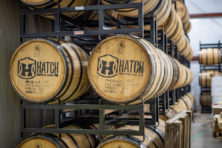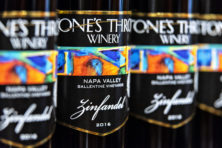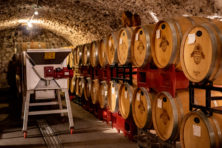Wine Trails: French Whining
- Share
- Tweet
- Pin
- Share

“I don’t really like French wine.”
This random, overheard musing triggered – for some reason – a negative reaction from all five of my senses and possibly from several senses I’m not aware of. Fortunately, I quickly gained control of my response mechanism, and, rather than confronting the perpetrator of this heinous statement, I calmly shook my head, rolled my eyes and reflected on why the stranger’s words had bothered me so much.
First of all, the utterance came from a man wearing a Trader Joe’s shirt who was talking to another man in a Trader Joe’s shirt, and both were standing in the wine section of a Trader Joe’s, leading me to assume they represented Trader Joe’s wine department.
Secondly, my rhetorical values were insulted by the generalization of the statement, which was laden with bias and stereotype, and garnished with a touch of ignorance.
Thirdly, I probably should admit that I am slightly obsessed with anything that has to do with wine. I should further confess that I had just returned from a month in Bordeaux, France, where I had an amazing experience that included learning a great deal about Bordeaux wines, tasting numerous amazing wines from the region, and, most importantly, meeting some really wonderful people who were willing to share their wines, food and experience with me while tolerating my lack of wine knowledge and inability to speak French. The man I overheard had inadvertently, and innocently, insulted not only wine, but also the individuals who produce and serve it to novices such as me.
It occurred to me that there was a metaphor, simile or some other rhetorical device between the man in the Trader Joe’s shirt and the challenge that Door County wine producers face. Because it’s impossible to taste and appreciate more than a minute sample of all the wines produced throughout the world (believe me, I’ve tried), we rely on random categorization, generalization and assumption to form our opinions on the topic.
Door County wines – similar to wines made in other regions – are diverse yet stereotyped. They range from small-quantity, terroir, estate wines made by Don Grasse of Whitecap Winery of Door County, to aromatic wines from local grapes expertly blended by Steve Johnson of Parallel 44 and Eric Gale of Anchored Roots, to exquisite Cabernet Sauvignons produced from Napa Valley grapes and aged in French oak by Russell Turco of Stone’s Throw.
Because the origin of the wine industry in the county is linked to sweet fruit wines that were produced to take advantage of the abundant cherries and apples that thrived in the cool, moist, lake-influenced climate, Door County wines are assumed to be sweet, lacking in character and complexity, and not to be taken seriously. And I would have to confess that I had held the same assumptions before moving to the peninsula and experiencing the abundance of wine available here.
The portfolio of Door County wine does include fruit wines, which, when served appropriately, can be perfect for celebrations and other festive, informal occasions.
Because of the cool, moist climate and short growing season, wines made from local grapes tend to be aromatic and acidic. Blending and leaving slight amounts of residual sugar can create balance and another classification of wines that are referred to as “front-porch wines”: meant to be sipped during relaxed conversations with friends.
The acidity of dry wines made from local grapes form another style of wine that can be paired effectively with lighter food.
Finally, the wines made from grapes imported from California and Washington State compete with serious wines produced in those states.
Each wine produced by Door County winemakers has a unique character and backstory. The only way to truly understand the complexity and diversity of the wines of any region is to waive any preconceived notions about them, taste as many as possible, and talk to the tasting-room associates and, if the opportunity arises, the winemaker. I’ve been fortunate enough to get to know several of the experts who produce the wines from the peninsula, which has led to a greater appreciation of their creations.
The more I thought about it, I concluded that my adverse reaction to the statement, “I don’t really like French wine” may have something to do with the frustration I feel when I hear statements that stereotype Door County wines as ones that shouldn’t be taken seriously.
Door County is fortunate to have a dozen wineries and tasting rooms open to the public, and those winery proprietors are happy to share their creations and tell their stories. It’s an enjoyable way to learn and eliminate assumptions and biases.
The peninsula also celebrates those wineries with a wine festival in June that allows locals and tourists alike to sample much of what Door County has to offer in one location. It’s a great way to gain an appreciation of the quality and diversity of the peninsula’s wine industry.
Wines, like individual tastes, have their own distinctive characteristics and personalities. Tasting brings the two together and can lead to very pleasant matches. It could be considered research, but it’s really an enjoyable way of learning and growing.
Jim Schnaedter describes himself as a wine appreciator, but not an expert. “I love drinking it, pouring it, talking about it and writing about it, but the more I do of each, the more I learn of what I don’t know about it.” He sets out to discover Door County wines and their makers in this series.




